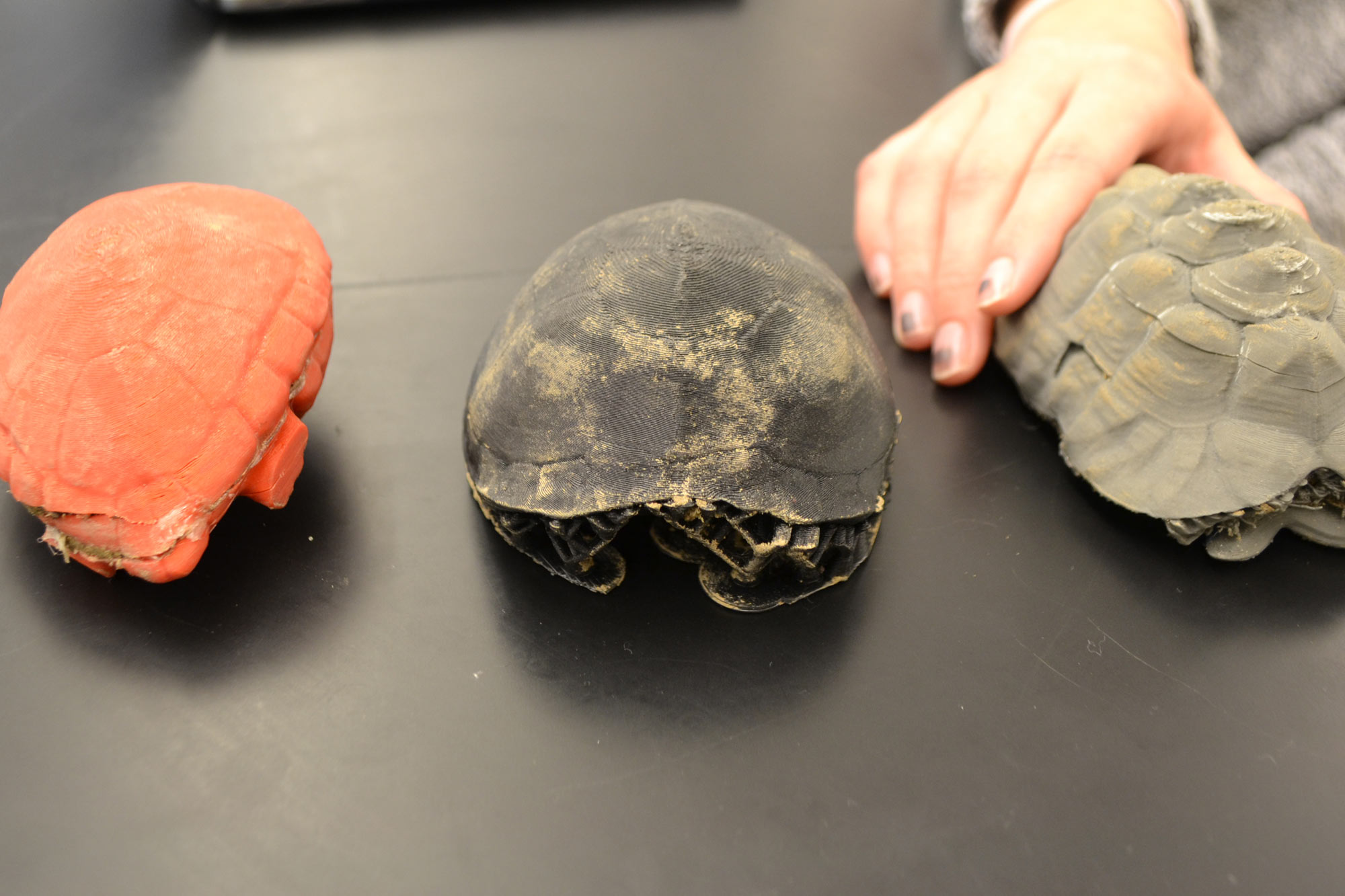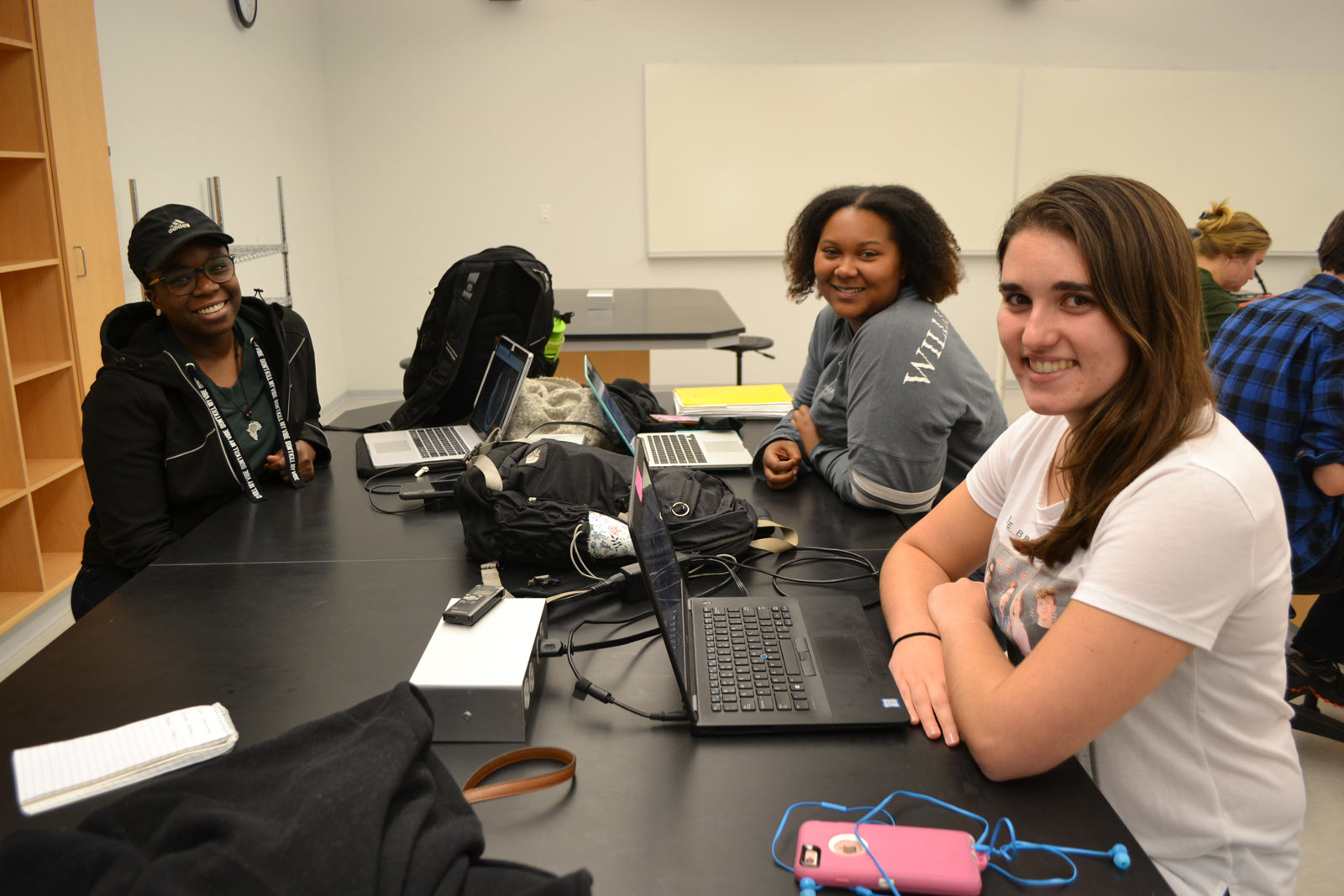
BUILDING SCIENCE
VERTEBRATE BIOLOGY IN THE MAKERSPACE
Biology Professor Laurie Sanderson has her students building biology — from the bottom up.
Sanderson has been teaching Vertebrate Biology since 1992 and still relies on the traditional preserved bones and specimens, but nowadays more of her students are designing and manufacturing their own specimens.
The class includes introductions to computer-aided design and advanced manufacturing techniques in the Small Hall makerspace in order to replicate biological characteristics.

Sanderson’s own experiments with CAD and 3-D printed models of fish mouths led to a patent granted to William & Mary in 2016 for a novel filtration device.
In her fall BIOL 456 class, one student group planned to drop three 3-D printed versions of turtle shells — a sea turtle, box turtle and leopard tortoise — to learn which is the most resilient when real-life predatory birds drop them.
Led by makerspace director Jonathan Frey and guided by other undergraduates trained in using the facility (coolly named Makerspace Student Engineers), Sanderson’s students reverse-engineered more vertebrate characteristics. One team built snake scales and designed computer simulations of how they mesh and move together to create a type of armor. Another student set out to design a better horseshoe, studying the anatomy of the equine leg and hoof, only to find that the shoes farriers design are already highly individualized.
Each project has a huge ‘gee whiz’ factor, but more importantly, they reflect the highly innovative, hands-on education offered at William & Mary.”
Another student used studio art skills to examine the fossil record to learn how cartilage evolved in humans over time. Yet another videotaped people walking and analyzed the footage in a National Institutes of Health image processing system to explore improving how prosthetic limbs are developed.
Each project has a huge “gee whiz” factor, but more importantly, they reflect the highly innovative, hands-on education offered at William & Mary, by which students are encouraged to undertake meaningful research. Vertebrate Biology still does dissections, but it does a whole lot more, too.
And in case you’re wondering: The box turtle won as most resilient.
